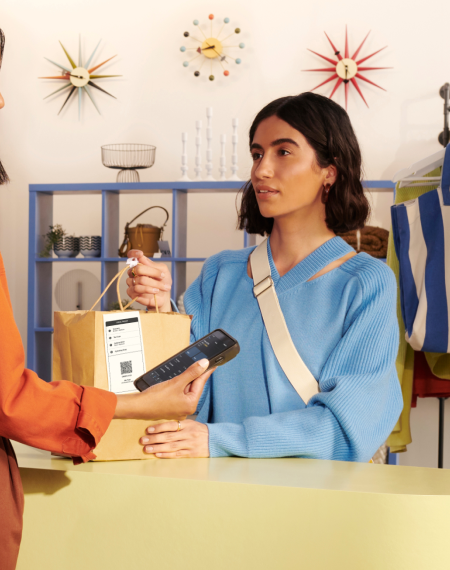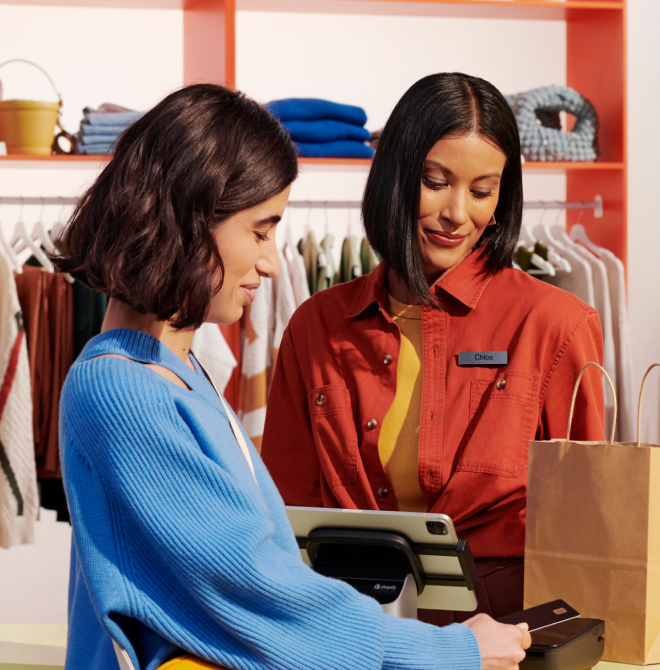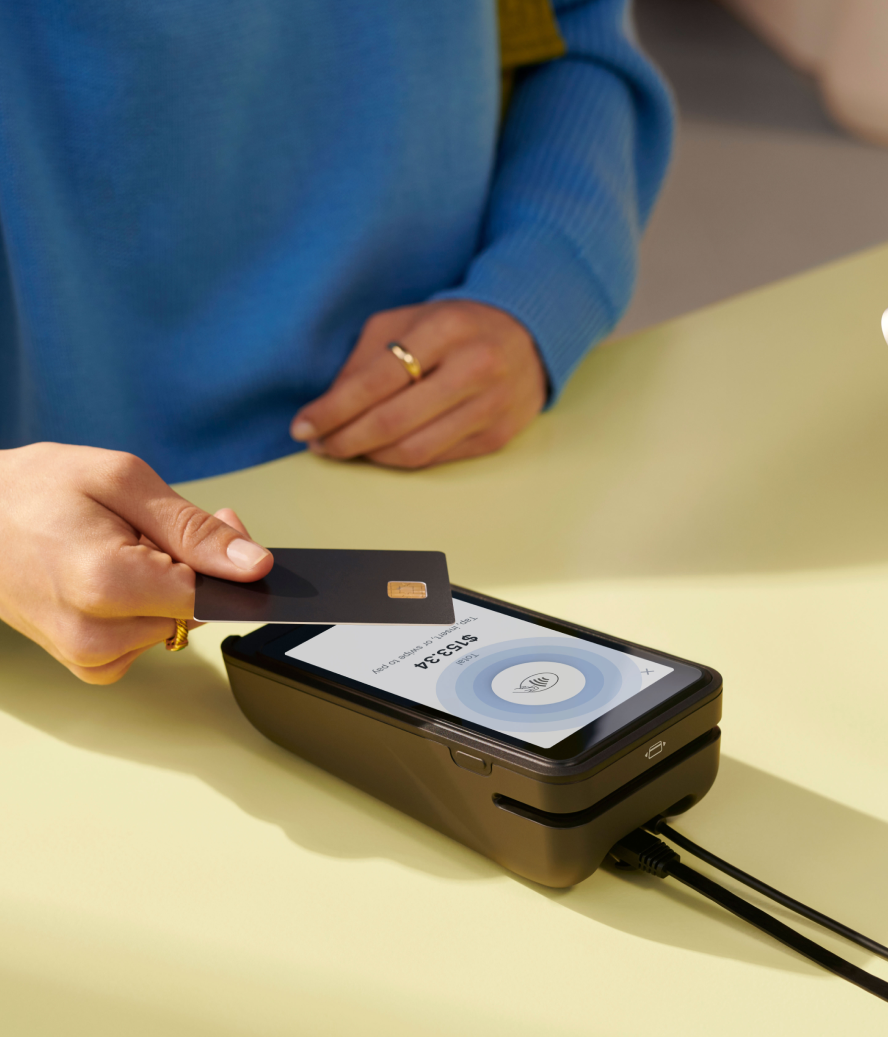Imagine stepping into a well-maintained store with appealing music, nice lighting, free samples, and knowledgeable staff. Now, think of the opposite: a retail store with dusty shelves, surly salespeople, and a confusing layout. Which one are you likely to want to go back to?
Customer experience involves every aspect of how shoppers perceive your store, whether that is online or brick-and-mortar, and it can have a profound impact on how your brand is viewed.
What is retail customer experience?
Retail customer experience refers to the totality of a customer’s experience throughout their interaction with a retail establishment. It can refer to interactions in both brick-and-mortar and online stores.
Different stores seek to create different customer experiences. For example, a pop-up shop is going to have a different focus than a big-box chain, and they’re both going to aim for a significantly different experience than a small online boutique. While each of these businesses may have a wildly different style, their goal is the same: to have happy customers who make purchases and are likely to return. After all, a store that builds customer loyalty is likely to be more successful than a store no one wants to revisit.
Online vs. brick-and-mortar retail customer experience
While online and brick-and-mortar retailers’ customer experiences have overlapping touchpoints, some key differences remain.
Brick-and-mortar
For customers in physical stores, a positive retail customer experience would likely include great products, helpful staff, and a well-designed space, as well as additional benefits, like a loyalty program and a hassle-free return policy. Unlike ecommerce stores, brick-and-mortar stores benefit from additional levels of experientiality: lighting, aromas, music, décor, and staff demeanor and dress can all impact the way a shopper feels as they browse your store.
Online
The tactile interaction for online shoppers happens after delivery, not at the store. A positive online customer experience includes some of the same elements as for in-person shopping—quality products, good return policies and special promotions apply here too. However, other elements, such as good website design and an intuitive user interface, glitch-free payments, and good shipping policies, are also factors.
What is an omnichannel retail customer experience?
An omnichannel retail customer experience refers to a unified approach across online and brick-and-mortar retail, and it has become a vital component of customer experience strategy for successful retail brands, whether that’s large department stores or local stores and boutiques. Creating a cohesive design, brand persona, and ethos helps customers understand what your brand is about, and having crossovers between physical and digital touchpoints allows customers to move seamlessly between real and virtual spaces.
An omnichannel customer experience allows greater flexibility among shoppers, accommodating their preferences and needs. Customers can research products online prior to in-store purchases, scan QR codes at store counters for detailed product information, or get discounts by downloading the store app. Likewise, virtual businesses can create an omnichannel retail experience by adding physical components to their repertoire, like pop-ups and events.
Components of a retail customer experience
Customer experience comprises numerous different components. Here are some elements to think about if you’re rethinking retail strategy:
Products
Customers’ primary reason for shopping, in-store or online, is to purchase goods or services. For a positive customer experience, the products in a retail store should meet their target consumers’ needs, whether they’re luxury goods or necessities.
Environment
Whether it’s the smell of coffee beans at your local roastery or energizing pop music at the youthful boutique, environmental factors play an important role in how retail customers feel at a store. Architectural design, color schemes, displays, music, lighting, and even smell are part of the environment and should be tailored to create a positive shopping experience. Online stores work in 2D rather than 3D, but the same concepts around design (layout, visual appeal) and centering the target consumer apply.
Customer support
Having knowledgeable, professional, and helpful support, whether that’s salespeople and store managers at brick-and-mortar locations, or a call-in or chat customer support for an online business, can give stores a competitive advantage and impact customer retention.
Efficiency and speed
Anything that impedes instant gratification—out-of-stock items, long lines at the register, incompetent salespeople—can hinder customer satisfaction and negatively impact customer experience. Similarly, unreliable supply chain issues, problems with delivery mechanisms like poor delivery tracking systems or frequently late deliveries, and problems at checkout and payment pages can impede operational efficiency for ecommerce stores and lead to a negative customer experience.
Convenient policies and perks
Hassle-free return policies, generous customer rewards programs, special promotions, physical or virtual events, and informative newsletters are all part of the customer experience and can help create brand loyalty.
How to enhance in-store retail customer experience
- Use unified branding
- Build an inviting destination
- Motivate employees to be helpful
- Create social media moments
- Develop customer relationships
Brick-and-mortar stores looking to improve customer experience can benefit from considering the following steps:
Use unified branding
Creating unified branding through the aesthetics, music, and vibe of your physical space and the visuals and language on your website can create a cohesive experience for customers. Whether your style is cottage core or urban funk, carry it through across channels and spaces to create a unified brand identity that customers can easily understand as soon as they walk into your store.
Build an inviting destination
With the prevalence of online shopping, retail stores need to do more to bring customers in through the door. Think of your store as a destination, one that provides your customers with something they can’t get online. Perhaps those are in-store experiences like demos, events, or consultations, or perks like personalized shoppers and free samples. If you can engage customers and ensure that they have a good time, they’re more likely to make the trip to the store.
Motivate employees to be helpful
Store personnel are often the face of a business in the minds of customers. Customers have choices where to buy; if they have a negative experience with unhelpful, rude, or overbearing staff members, they’ll likely shop elsewhere. When training, find ways to motivate employees to bring a helpful demeanor to the sales floor.
Create social media moments
If you create a social-media-friendly environment, customers are more likely to talk about your store online. You can create Instagrammable corner walls, have the store hashtag on changing room mirrors, and create a store layout that’s conducive to selfies. Creating memorable retail experiences and social media moments can bring customers in through the door as well as function as a form of organic marketing.
Develop customer relationships
Building customer relationships—whether that’s by offering personalized experiences like birthday discounts, or just chatting with customers about their needs—can help create a positive customer experience and improve brand loyalty. It can also help you gather customer information and learn about how best to satisfy customer needs.
How to enhance online retail customer experience
- Create a glitch-free experience
- Focus on design
- Leverage new tech
- Have excellent customer service
- Create a speedy fulfillment cycle
- Develop customer relationships
Creating a pleasant online shopping experience has become essential for ecommerce stores as well as brick-and-mortar stores with an online presence. Here are some ways to make an online customer’s journey a pleasant one:
Create a glitch-free experience
A fast, easy-to-navigate, and glitch-free ecommerce platform is essential not only to a positive customer experience but also to retail success. Slow-loading pages, confusion while navigating, and glitches during the payment process can drive customers away.
Focus on design
Having a well-laid out, aesthetically pleasing website that matches your store’s brand ethos conveys professionalism, trustworthiness, and reliability. It also strengthens your brand identity. Choose fonts, logos, and layouts that complement each other, and use photographs and videos to demonstrate your products and services in use.
Additionally, the language you use—whether that’s in a brand slogan, a statement of your company values, or in product descriptions—should match your vibe. If you’re going for upscale luxury, you might use a sophisticated font and posh language. If you’re a funky boutique, you might prefer bright colors and a more casual tone.
Leverage new tech
Using relevant tech like augmented reality (AR) can help boost customer engagement. For example, you can use AR to allow customers to virtually try on eyeglass frames or see what a particular sofa looks like in their living room. You can also use social media tech to make sure customers see products that are relevant to them and so they can make purchases through social media.
Have excellent customer service
If users can get customer service quickly and reliably, whether they’re looking for information or need help with a problem, they’re more likely to have a positive customer retail experience. Companies often use a combination of humans and bots to offer support to customers. Whatever combination you decide to opt for, optimize for wait times, efficiency, and usefulness.
Create a speedy fulfillment cycle
We all want our online purchases to get to our doors quickly. Try to create a fulfillment cycle that minimizes the time between an order being placed and delivered. You might also consider creating a tiered system by offering a more expensive option for expedited delivery.
Develop customer relationships
Customers remember the little things: when people leave favorable reviews, thank them. You can also increase customer engagement by asking them to fill in their information to receive promotions, sign up for newsletters, and send them discounts for birthdays and special occasions. Another aspect of building customer relationships is not ignoring negative feedback. Address any negative reviews or complaints in a timely and forthright manner, and provide support, or offer to replace a defective product.
Ways to analyze retail customer experience
Customer experience (CX) metrics
CX metrics such as customer satisfaction (how satisfied a customer is at the end of an interaction), net promoter score (how likely they are to recommend the brand to others), and customer lifetime value or CLV (how much a customer spends during the lifetime of their relationship with the brand) can help business owners gain insight on whether customers are having a positive retail experience.
These are often measured using a simple survey customers can take after an interaction—for example, after they’ve made a purchase or spoken to a customer support representative. Alternatively, if you have a physical store, you can measure user satisfaction by asking customers to simply press a button at checkout to indicate whether or not they’re satisfied with their experience.
Digital engagement analysis
You can also use social media to understand how happy customers are with their retail experience. For example, you can use social listening tools to track mentions of your brand or look at metrics like website visits and bounce rates, time spent on one page, and cart abandonment. Customer data and customer history can offer significant insight into how customers behave, and whether they’re happy with their experience.
Qualitative feedback
To learn about the retail experience of your customers you can ask for long-form feedback and encourage them to leave reviews on your website or social media pages after making a purchase. Forums like this are a valuable way of learning about customer experiences you may not get from other quantitative metrics.
Retail customer experience FAQ
What are the most important customer service skills in retail?
In-store customer service staff should be knowledgeable, helpful, professional, and strong communicators. The same goes for customer service representatives who answer phone or chat messages and queries.
Why is customer experience important in retail?
A positive customer experience often translates to increased and repeated purchases. A happy customer is also more likely to spread positive words that will attract new customers.
Can data and analytics help retailers understand customer behavior preferences?
Software programs such as Informatica, Qualtrics, and Quantum Metric can provide business owners data on customer journeys, purchase journeys, and sales funnels—what people buy, why, and through what channels.
What are the challenges of delivering a superior customer experience?
Creating a seamless customer retail experience can take time, money, and resources. Consistency across channels, including creating a cohesive aesthetic, brand, and tone across channels may require familiarity with website design, store layout best practices, and social media editing.
How can retailers stay ahead of retail trends and customer experience trends?
You can keep up with customer experience trends to ensure a positive retail experience by consulting with CX, trend, tech, and retail experts, and by learning about the latest CX developments in your industry.




